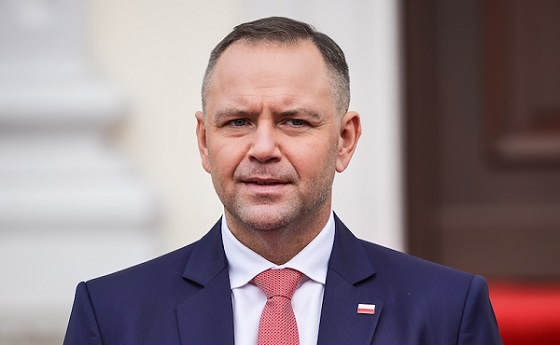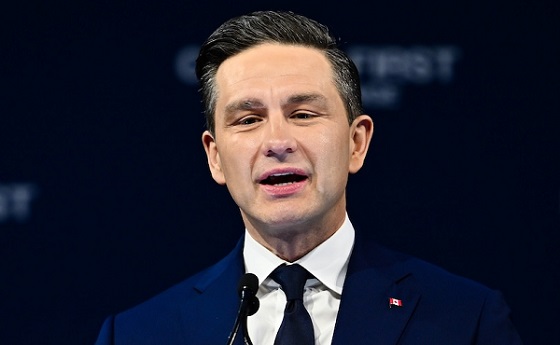Health
Pharmacare won’t help Canadians with rare disorders

From the MacDonald Laurier Institute
By Nigel Rawson and John Adams
Canadians with rare disorders will be even worse off if NDP’s parliamentary blackmail works
Last month the federal NDP convention in Hamilton voted unanimously to force the Liberals to introduce a single-payer universal pharmacare program or see the current “confidence-and-supply” deal canceled. Will universal government-run pharmacare benefit Canadians with rare disorders? We fear not.
Canadians with such disorders are already disadvantaged compared with sufferers in other countries. Fewer specialized drugs are launched in Canada than in the United States and Europe. Those that are get approval for marketing about a year, on average, after they do there.
That’s not because Health Canada takes longer to review new medicines. The process takes about the same time in the three places. Rather, delayed approval is likely due to manufacturers submitting later to Health Canada because federal, provincial and territorial hostility towards the industry has made our biopharmaceutical market less attractive.
Approval doesn’t mean government drug plans will pay for a drug, however. Further government-created barriers impact all Canadians, but particularly those with rare disorders who want access to novel drugs for their unmet or poorly met health needs. As a consequence, what gets listed in government drug plans varies widely, leading to a postal code lottery.
In a set of articles published over the summer by the Macdonald-Laurier Institute, we discuss the several obstacles patients and their families face as they try to gain access to new or expensive innovative therapies. They include: the lack of federal incentives for developers to submit new medicines to Health Canada; health technology assessment that is neither accountable, independent nor transparent and makes recommendations about which drugs to cover in public drug plans to governments; and price negotiations between government drug plans and manufacturers.
Even when drug developers clear these government-created barriers, public drug plans are under no obligation to add the approved medicines to their benefit lists. Too often governments focus only on drug costs and ignore the broader benefits effective drugs can bring, not only to the health and well-being of patients and their families, but also to other parts of the health system, to the economy and to society at large. If a new drug reduces doctor or emergency visits or hospitalizations or helps a person get back to work, those benefits typically are ignored by our drug assessment system.
The federal government made matters worse over the past six years by planning to drastically reduce drug prices by regulatory order, not negotiation. This caused considerable uncertainty among developers, resulting in even fewer new drugs being submitted for marketing approval here than in the U.S. and EU.
Proponents plainly want a lowest-common-denominator government-run public plan that would crowd out private plans, which over two-thirds of Canadians currently rely on for drug access.
Despite the federal government committing $1.5 billion over three years to “increase access to, and affordability of, effective drugs for rare diseases to improve the health of patients across Canada,” its initiative is not comprehensive. So far, Canada has neither a government-endorsed national rare disorder strategy nor an Orphan Drug Act providing incentives to developers to launch orphan medicines in Canada. Most other developed countries have both.
Patients’ organizations have stepped in where governments have failed to act and proposed a Canadian strategy that would include incentives and funding to encourage developers to launch drugs in this country and cut through the barriers we have described to provide timely access to the many innovative treatments on the research horizon. For example, access to breakthrough drugs could be allowed as soon as Health Canada says they are safe and effective, even as other administrative boxes are checked and prices negotiated. Other countries use this approach.
Canadians afflicted with any of the 11,000 or so known rare disorders have significant unmet needs. Fewer than five per cent have any treatment beyond symptom relief or palliative care. The last thing these people need is for governments to ration innovative drugs even more than they already do or to force even deeper price cuts from drug developers in order to pay for universal pharmacare that covers only basic medicines.
Canadians with rare disorders almost certainly will be even worse off if the NDP’s parliamentary blackmail works.
Nigel Rawson is an affiliate scholar with the Canadian Health Policy Institute and a senior fellow with the Macdonald-Laurier Institute, as is John Adams, co-founder and CEO of Canadian PKU and Allied Disorders Inc.
Business
Cutting Red Tape Could Help Solve Canada’s Doctor Crisis

From the Frontier Centre for Public Policy
By Ian Madsen
Doctors waste millions of hours on useless admin. It’s enough to end Canada’s doctor shortage. Ian Madsen says slashing red tape, not just recruiting, is the fastest fix for the clogged system.
Doctors spend more time on paperwork than on patients and that’s fueling Canada’s health care wait lists
Canada doesn’t just lack doctors—it squanders the ones it has. Mountains of paperwork and pointless admin chew up tens of millions of physician hours every year, time that could erase the so-called shortage and slash wait lists if freed for patient care.
Recruiting more doctors helps, but the fastest cure for our sick system is cutting the bureaucracy that strangles the ones already here.
The Canadian Medical Association found that unnecessary non-patient work consumes millions of hours annually. That’s the equivalent of 50.5 million patient visits, enough to give every Canadian at least one appointment and likely erase the physician shortage. Meanwhile, the Canadian Institute for Health Information estimates more than six million Canadians don’t even have a family doctor. That’s roughly one in six of us.
And it’s not just patients who feel the shortage—doctors themselves are paying the price. Endless forms don’t just waste time; they drive doctors out of the profession. Burned out and frustrated, many cut their hours or leave entirely. And the foreign doctors that health authorities are trying to recruit? They might think twice once they discover how much time Canadian physicians spend on paperwork that adds nothing to patient care.
But freeing doctors from forms isn’t as simple as shredding them. Someone has to build systems that reduce, rather than add to, the workload. And that’s where things get tricky. Trimming red tape usually means more Information Technology (IT), and big software projects have a well-earned reputation for spiralling in cost.
Bent Flyvbjerg, the global guru of project disasters, and his colleagues examined more than 5,000 IT projects in a 2022 study. They found outcomes didn’t follow a neat bell curve but a “power-law” distribution, meaning costs don’t just rise steadily, they explode in a fat tail of nasty surprises as variables multiply.
Oxford University and McKinsey offered equally bleak news. Their joint study concluded: “On average, large IT projects run 45 per cent over budget and seven per cent over time while delivering 56 per cent less value than predicted.” If that sounds familiar, it should. Canada’s Phoenix federal payroll fiasco—the payroll software introduced by Ottawa that left tens of thousands of federal workers underpaid or unpaid—is a cautionary tale etched into the national memory.
The lesson isn’t to avoid technology, but to get it right. Canada can’t sidestep the digital route. The question is whether we adapt what others have built or design our own. One option is borrowing from the U.S. or U.K., where electronic health record (EHR) systems (the digital patient files used by doctors and hospitals) are already in place. Both countries have had headaches with their systems, thanks to legal and regulatory differences. But there are signs of progress.
The U.K. is experimenting with artificial intelligence to lighten the administrative load, and a joint U.K.-U.S. study gives a glimpse of what’s possible:
“… AI technologies such as Robotic Process Automation (RPA), predictive analytics, and Natural Language Processing (NLP) are transforming health care administration. RPA and AI-driven software applications are revolutionizing health care administration by automating routine tasks such as appointment scheduling, billing, and documentation. By handling repetitive, rule-based tasks with speed and accuracy, these technologies minimize errors, reduce administrative burden, and enhance overall operational efficiency.”
For patients, that could mean fewer missed referrals, faster follow-up calls and less time waiting for paperwork to clear before treatment. Still, even the best tools come with limits. Systems differ, and customization will drive up costs. But medicine is medicine, and AI tools can bridge more gaps than you might think.
Run the math. If each “freed” patient visit is worth just $20—a conservative figure for the value of a basic appointment—the payoff could hit $1 billion in a single year.
Updating costs would continue, but that’s still cheap compared to the human and financial toll of endless wait lists. Cost-sharing between provinces, Ottawa, municipalities and even doctors themselves could spread the risk. Competitive bidding, with honest budgets and realistic timelines, is non-negotiable if we want to dodge another Phoenix-sized fiasco.
The alternative—clinging to our current dysfunctional patchwork of physician information systems—isn’t really an option. It means more frustrated doctors walking away, fewer new ones coming in, and Canadians left to languish on wait lists that grow ever longer.
And that’s not health care—it’s managed decline.
Ian Madsen is a senior policy analyst at the Frontier Centre for Public Policy.
Addictions
BC premier admits decriminalizing drugs was ‘not the right policy’

From LifeSiteNews
Premier David Eby acknowledged that British Columbia’s liberal policy on hard drugs ‘became was a permissive structure that … resulted in really unhappy consequences.’
The Premier of Canada’s most drug-permissive province admitted that allowing the decriminalization of hard drugs in British Columbia via a federal pilot program was a mistake.
Speaking at a luncheon organized by the Urban Development Institute last week in Vancouver, British Columbia, Premier David Eby said, “I was wrong … it was not the right policy.”
Eby said that allowing hard drug users not to be fined for possession was “not the right policy.
“What it became was a permissive structure that … resulted in really unhappy consequences,” he noted, as captured by Western Standard’s Jarryd Jäger.
LifeSiteNews reported that the British Columbia government decided to stop a so-called “safe supply” free drug program in light of a report revealing many of the hard drugs distributed via pharmacies were resold on the black market.
Last year, the Liberal government was forced to end a three-year drug decriminalizing experiment, the brainchild of former Prime Minister Justin Trudeau’s government, in British Columbia that allowed people to have small amounts of cocaine and other hard drugs. However, public complaints about social disorder went through the roof during the experiment.
This is not the first time that Eby has admitted he was wrong.
Trudeau’s loose drug initiatives were deemed such a disaster in British Columbia that Eby’s government asked Trudeau to re-criminalize narcotic use in public spaces, a request that was granted.
Records show that the Liberal government has spent approximately $820 million from 2017 to 2022 on its Canadian Drugs and Substances Strategy. However, even Canada’s own Department of Health in a 2023 report admitted that the Liberals’ drug program only had “minimal” results.
Official figures show that overdoses went up during the decriminalization trial, with 3,313 deaths over 15 months, compared with 2,843 in the same time frame before drugs were temporarily legalized.
-

 Alberta2 days ago
Alberta2 days agoPremier Smith addresses the most important issue facing Alberta teachers: Classroom Complexity
-

 Alberta2 days ago
Alberta2 days agoAlberta taxpayers should know how much their municipal governments spend
-

 International9 hours ago
International9 hours agoPoland’s president signs new zero income tax law for parents with two children
-

 Business20 hours ago
Business20 hours agoEthics on Ice: See You Next Year
-

 International10 hours ago
International10 hours agoAustralian territory bans men from women’s prisons in national first
-

 espionage2 days ago
espionage2 days agoBreaking: P.E.I. Urges RCMP Probe of Alleged Foreign Interference, Money Laundering
-

 National9 hours ago
National9 hours agoPoilievre accuses Canada’s top police force of ‘covering up’ alleged Trudeau crimes
-

 Business1 day ago
Business1 day agoCutting Red Tape Could Help Solve Canada’s Doctor Crisis






